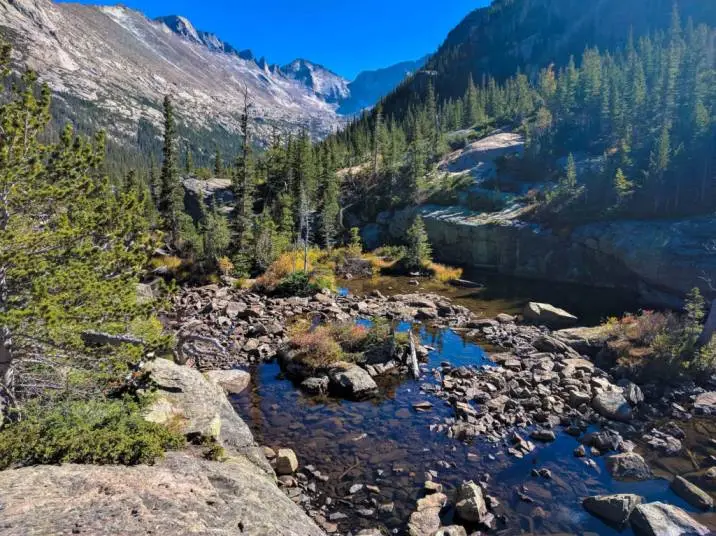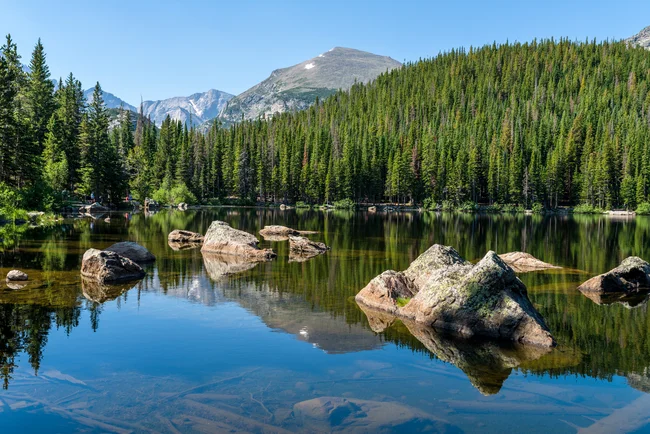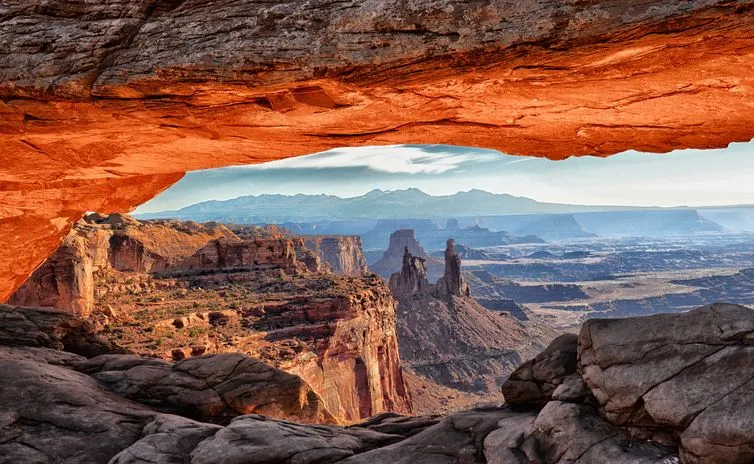Rocky Mountain National Park showcases Colorado in its most dazzling appearance. Beautiful scenery in this diverse area consists primarily of massive mountains with alpine lakes throughout endless coniferous woodlands.
This national park earns its distinction of being the top destination each year because of its allure.
Natural beauty in combination with vast recreational choices draw people of all nationalities who love natural settings to this park. A lifetime is insufficient to complete the large number of trekking and rock climbing along with sightseeing activities that exist in this park.
This guide will present the major attractions of Rocky Mountain National Park. Anyone from any age group and hobby level will find something to love at the park. Our guide contains essential advice about reducing crowds while traveling along with required items and crucial information for enjoying your complete Rocky Mountain National Park experience.
Rocky Mountain National Park at a glance
Open: The park remains open yearly yet many sections shut down due to heavy snow during winter and spring. The transportation services together with camping facilities along with Trail Ridge Road function on limited operations at present.You can find free entry with your America the Beautiful Pass while rates are $30 for vehicles and $25 for motorcycles and $15 per person for hiking and riding.e lakes, and unending pine woods define this gorgeous and diverse region.
Every year, it is one of the most visited national parks… and with good reason!
The park’s natural splendor and many outdoor activities make it a magnet for nature aficionados throughout the world. The quantity of trekking, rock climbing, and sightseeing in the park might keep you busy for a lifetime.
In this guide, we’ll break down the top finest things to do in Rocky Mountain National Park. The park provides something for anyone, no matter their age, skill level, or hobbies. We’ll also discuss methods to avoid the crowds, goods to bring, and anything else you need to know to have a successful visit.
Best Things To Do In Rocky Mountain National Park
If you’re seeking for the absolute finest things to do in Rocky Mountain National Park, here are our top 5 recommendations:
1. Explore the Bear Lake Road Corridor

A visit of only a few hours to the park deserves exploring the Bear Lake region. Rocky Mountain National Park ranks Bear Lake among its most sought-after visitor attractions.
During weekend visits significant crowds normally saturate both trails together with parking areas within the park. Despite high documentation levels you will soon lose track of all the people because of this picturesque environment.
At Bear Lake, you may find a high concentration of lovely lakes, beautiful woodlands, rich animals, and jaw-dropping vistas of Longs Peak.
In addition, the Bear Lake region holds many of the national park’s bouldering options. More on that later.
When planning a visit to Bear Lake, remember to reserve a Timed Entry + permit. Consider using the park’s Park & Ride system, because parking lots fill rapidly. If you want to avoid crowds, start early or late in the day, and visit on weekdays.
*You will need a Timed Entry + permit to visit the Bear Lake Road Corridor. See our section on timed entrance permits below about the difference and how to reserve yours.
2. Drive Trail Ridge Road
The east and west sections of Rocky Mountain National Park are connected by Trail Ridge Road. Tourists journey through the alpine tundra area using Trail Ridge Road after its completion into this high-elevation park environment. The tundra remains treeless while pika connect many other animal species throughout this ecosystem. Panorama views encompassing the whole park and breath-taking Longs Peak perspectives stretch here.
The drive to Rock Cut Trail along with Lava Cliffs and Alpine Visitor Center and Poudre Lake comprises several key stops to see along the route. Heavy winter snow accumulations cause periodic closures on this path.
It takes roughly 3 hours to go out and return on this 48-mile route. Plan for at least 4-6 hours to stop at all the places and accomplish some small treks.
3. Visit the Alpine Visitor Center
A visitor centre within the National Park Service reaches its highest possible elevation at 11,796 feet above sea level. The Alpine Visitor Centre operated by Rocky Mountain National Park sits at 11,796 feet elevation.
You can find The Alpine Visitor Centre sitting along Trail Ridge Road. The facility provides extraordinary views across Old Fall River Road and the neighbouring tundra ecosystem. You can grab your national park passport stamp before touring the museum and enjoying your meal at this location.
The Alpine Ridge Trail starts at the visitor centre parking lot for a short intense climb to its summit. From the summit of this trail you can see all of the park's northern territories.
Visitors should make the journey to Alpine Visitor Centre through Old Fall River Road from deceiving Eastern park boundaries then follow Trail Ridge Road back because that route avoids repeated return trips on Trail Ridge Road.
When you come during the winter months the Alpine Visitor Center remains closed. If you visit during this period you should head to the Beaver Meadows Visitor Center which serves as the park headquarters.
Looking for a way to squeeze this all in? Our 3 day Rocky Mountain National Park itinerary has all of the logistics and details covered for you!
4. Summit Longs Peak

Sitting at 14,259 feet in elevation makes Longs Peak the standout feature of the national park. This unique summit peak stands clearly visible across the entire park region. Longs Peak stands as visible from downtown Denver's skyline.
The challenge of reaching the summit of Longs Peak provides great personal satisfaction together with being one of the hardest pursuits in Rocky Mountain National Park.
Most people reach the peak via the famed Keyhole Route. This path is exposed, sees enormous drop-offs, and requires climbing up rocks. While it doesn’t need technical climbing skills, it does require a high degree of fitness. It’s far tougher than your ordinary hike.
Read Also: Seattle Hot Air Balloon Ride
5. Spot wildlife
Animal species thrive throughout the area known as Rocky Mountain National Park. The lower elevations of this area contain abundant populations of elk as well as mule deer along with squirrels and wild turkeys. Bighorn sheep and marmots and pikas live at the highest elevations found in the park. You might just spot a bear along with moose or mountain lion while visiting the park.
Elk may be spotted often throughout the park. It’s fairly unusual to spot an elk when strolling on a track in the park. They are most active around dawn and dusk. Herds of elk regularly travel near the Moraine Park and Bear Lake regions.
Bighorn sheep may be seen in Sheep Lakes (it’s in the name!) from May through August. Moose are particularly numerous in the Kawuneeche Valley area along the park’s west side.







